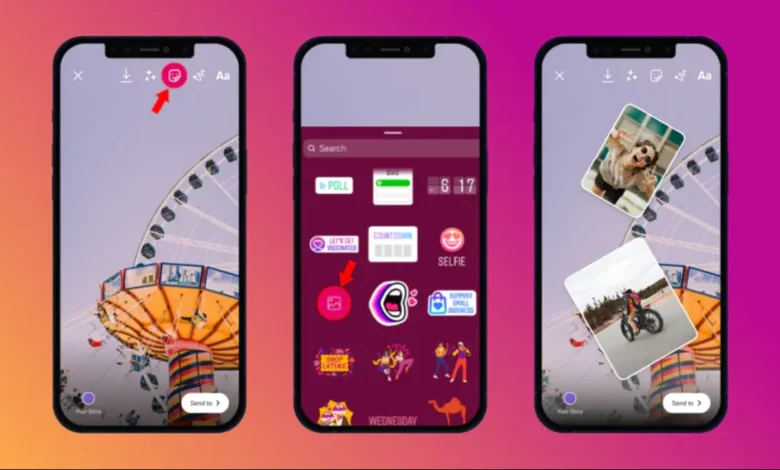Introduction to Multiple Stories
The concept of Your Topics | Multiple Stories serves as a vital illustration of the diversity inherent in human experience. Each narrative, whether personal or communal, contributes uniquely to the broader understanding of our shared existence. By interweaving various stories, we can create a rich tapestry that not only reflects individual perspectives but also highlights common themes and connections among them.
Storytelling has long been a fundamental aspect of humanity, transcending cultures and time periods. It allows individuals to convey their experiences, beliefs, and values while Your Topics | Multiple Stories providing a framework for others to relate. The power of narratives lies in their ability to shape perspectives, whether they are told through folklore, literature, or our daily conversations. Narratives foster empathy, as they invite listeners or readers into the world of the storyteller, allowing them to experience alternative viewpoints and comprehend the complexities of different lives.
In recognizing the importance of Your Topics | Multiple Stories, one can appreciate how they contribute to a more holistic understanding of various social contexts. By examining different narratives, we can confront biases, challenge stereotypes, and acknowledge the multifaceted nature of human existence. This dialogue between stories encourages curiosity and reflection, promoting a culture of learning and growth. Furthermore, the interplay of diverse narratives can illuminate the shared pain and joy found within the human condition, ultimately connecting us through our collective experiences.
As we delve into the intricacies of Your Topics | Multiple Stories, it becomes evident that they are not isolated accounts, but rather interconnected threads. Each story we hear adds depth to our understanding of the world and our place within it, paving the way for deeper connections and enriched interactions among individuals and communities alike.
The Power of Diverse Perspectives

Diverse perspectives play a crucial role in storytelling, enhancing both the richness of the narrative and the experience of the audience. By integrating various voices and experiences, narratives become multi-dimensional, allowing for a more comprehensive exploration of themes and ideas. This multiplicity is particularly significant in today’s interconnected world, where audiences increasingly seek representation and relatability in the stories they consume. When authors and creators embrace diverse perspectives, they cultivate more engaging narratives that resonate with a wider demographic.
In literature, works such as Chimamanda Ngozi Adichie’s “Americanah” and Colson Whitehead’s “The Underground Railroad” exemplify the power of diverse viewpoints. Adichie’s novel weaves the complexities of race, identity, and love through the lens of a Nigerian immigrant, presenting a narrative that challenges the dominant Western perspective. Similarly, Whitehead’s work employs magical realism to explore the harrowing journey of enslaved people, grounding it in a unique historical context enriched by the diverse experiences of its characters.
Beyond literature, films and television series also showcase the importance of multiple narratives. For instance, the series “Master of None” incorporates various cultural perspectives, primarily focusing on the Asian-American experience, thereby highlighting issues of race, identity, and love in contemporary society. Similarly, animated films like “Coco” do not just entertain; they provide insights into Mexican culture and traditions, celebrating the significance of family and heritage through diverse storytelling methods.
Ultimately, storytelling that embraces diverse perspectives fosters empathy and understanding among audiences. When people encounter narratives that reflect a spectrum of human experiences, they are more likely to appreciate differences and recognize shared humanity. Such an approach not only enriches individual stories but also contributes to a more inclusive and representative cultural landscape.
Choosing Your Topics: The Foundation of Engaging Stories

When embarking on a journey to craft compelling narratives, the selection of topics serves as a critical foundation for storytelling. This process begins with understanding your audience. Identifying subjects that resonate with them is key; this requires not only an awareness of their interests but also an appreciation for their emotions and experiences. Engaging stories often arise from themes and issues that reflect the audience’s own realities, enabling them to connect deeply with the narrative.
Another important factor to consider is cultural relevance. Stories that reflect cultural nuances or address significant societal issues tend to engage audiences on a more profound level. Such narratives can evoke empathy, provoke thought, and inspire action. By integrating culturally relevant elements, storytellers can add layers of depth to their work, inviting audiences from diverse backgrounds to interpret the story in various ways. This multiplicity of interpretations can enhance the richness of the narrative and promote broader discussions surrounding the themes explored.
Additionally, brainstorming and refining ideas is essential in the topic selection process. Writers may benefit from employing techniques such as mind mapping, free writing, or collaborative discussions to generate ideas. Each method encourages creativity and helps to uncover unique perspectives that may not initially be apparent. Once potential topics have been identified, it’s crucial to evaluate their scope and flexibility, ensuring they can foster multiple interpretations while remaining focused enough to maintain audience engagement. As stories develop, returning to the initial topic for refinement can further enhance the narrative while ensuring clarity and coherence.
Ultimately, the process of choosing topics involves a delicate balance of understanding the audience, appreciating cultural contexts, and cultivating ideas that allow for diverse interpretations. An effective topic serves as a springboard for storytelling, laying the groundwork for narratives that engage, inspire, and resonate with readers.
Crafting Engaging Characters Across Multiple Stories
Character development plays a crucial role in the realm of storytelling, particularly when weaving narratives that span diverse plots and settings. Engaging characters are not merely vehicles to drive the narrative; they are the heart and soul that invite readers to immerse themselves in the journey. To create relatable and complex characters, writers must delve deep into their personalities, motivations, and backgrounds, ensuring they are multi-dimensional and capable of evolving across various storylines.
One effective strategy for character development is the creation of a comprehensive character profile. This involves outlining key traits, flaws, dreams, and histories that influence the character’s decisions and relationships. By devising a well-rounded character, authors can generate a sense of familiarity and authenticity, allowing readers to forge a connection that transcends individual stories. When a character possesses a rich backstory and relatable traits, they invite readers to invest emotionally in their journey, making the impact of their decisions resonate across multiple narratives.
Another important aspect is to ensure that characters have a clear trajectory that evolves with each storyline. This can be achieved by placing them in varied environments and challenging circumstances that test their values and motivations. By introducing different conflicts and relationships, writers can reveal new facets of their characters, allowing for nuanced growth and greater emotional depth. As these characters navigate through diverse storylines, their relatable struggles and triumphs create an enriching experience for the audience.
Ultimately, well-crafted characters not only enhance each individual narrative but also build a larger universe where readers can explore themes of resilience, connection, and growth. By focusing on developing characters that resonate across multiple stories, authors can create an engaged audience eager to follow their journeys across various plotlines.
Weaving Multiple Narratives: Techniques for Cohesion

In the art of storytelling, weaving multiple narratives together requires a deliberate approach to maintain clarity and ensure emotional impact. One effective technique is the use of parallel narratives, where two or more storylines run concurrently. This approach allows readers to draw connections between the different narratives, enriching their understanding and engagement. Each thread of the story complements the others, highlighting themes of juxtaposition or contrast that can enhance the depth of the overall narrative.
Non-linear storytelling presents another compelling technique for intertwining narratives. This method not only engages readers by challenging their expectations but also encourages them to piece together the narratives in a way that reveals deeper insights. By presenting events out of chronological order, writers can create suspense or foreshadowing that links disparate elements together, ultimately leading to a satisfying resolution. This technique is especially effective in exploring complex themes or character developments that require reflective thought and consideration.
Interlinked character arcs further serve to connect Your Topics | Multiple Stories seamlessly. By developing characters who appear in more than one narrative, writers can create a tapestry of interactions and relationships that enrich the overall experience. These interconnected stories allow for the exploration of various perspectives and foster a sense of unity among the narratives. Characters can evolve through their interactions across different stories, reinforcing the central themes while maintaining a clear focus on their individual journeys.
Utilizing these techniques—parallel narratives, non-linear storytelling, and interlinked character arcs—can significantly enhance the cohesiveness of multiple narratives. Each method provides a distinct framework for storytelling that not only captivates the audience but also preserves clarity amid the complexity. Implementing these strategies thoughtfully can lead to a rich and engaging narrative landscape, inviting readers to appreciate the intricate weave of stories presented. In conclusion, the art of intertwining narratives is a delicate balancing act that, when done effectively, can elevate storytelling to new heights.
The Role of Conflict in Multi-Storytelling

Conflict plays a crucial role in the realm of storytelling, especially within the framework of multi-storytelling, where various narratives intersect and interact. It acts as the catalyst that propels characters into action, providing the necessary tension that fuels their development and the advancement of the plot. Different types of conflicts can be explored in this format, including internal, external, and interpersonal conflicts that arise not only between characters but also within the narratives themselves.
Internal conflict often involves a character grappling with their thoughts, emotions, or morality. In multi-storytelling, this internal struggle may be mirrored or contrasted across different narratives, allowing for a deeper exploration of themes such as identity, purpose, or fear. On the other hand, external conflicts stem from external pressures, such as societal expectations or environmental challenges. These conflicts drive the characters to react in various ways, leading to growth and transformation, which are pivotal in keeping the audience engaged.
Interpersonal conflict showcases the dynamics between characters, providing rich interaction that can reveal deeper insights and nuances. This type of conflict can lead to pivotal moments in the narrative, influencing character decisions across multiple storylines. As these conflicts escalate, they ultimately require resolution. Depending on how conflict is resolved—whether through reconciliation, defeat, or change—the impact on character development is significant, often serving as a benchmark for their evolution throughout the narrative.
The manner in which conflicts are resolved can either unite or divide characters, further enhancing the audience’s emotional investment in their journeys. As such, conflict is not merely a narrative device; it is essential in shaping the characters and enriching the audiences’ engagement with their stories. Through thoughtful exploration of conflicts in multi-storytelling, a more intricate and engaging narrative tapestry is woven, capturing the complexities of human experience and interaction.
Visual and Multimedia Storytelling: Enhancing Your Topics
.webp)
In the realm of storytelling, the integration of visual and multimedia elements plays a crucial role in engaging an audience and enriching the narrative experience. Visual storytelling encompasses the use of images, videos, infographics, and animations to convey ideas and emotions that words alone may struggle to express. By incorporating these elements into narratives, creators can effectively enhance their topics, thereby creating a more immersive experience for the audience.
Images serve as powerful tools for capturing attention and evoking emotions. A well-chosen photograph can relay a story’s essence, drawing the viewer in and prompting intrigue. Similarly, videos can add dynamic elements to storytelling, allowing for a more in-depth exploration of themes and characters. For instance, a behind-the-scenes video can provide context and insight into the creative process, making the narrative more relatable and engaging for the audience.
Moreover, multimedia elements like sound and music can further elevate storytelling. Soundtracks can set the mood, influencing audience perceptions and responses to the narrative. This synergy between audio and visual elements can create a more holistic storytelling experience, fostering a deeper connection to the topics being presented. By leveraging various media formats, storytellers can cater to diverse audience preferences, ensuring that their messages resonate across different demographics.
Incorporating visuals and multimedia not only makes a story more accessible but also aids in conveying complex ideas. Infographics, for instance, can distill intricate information into digestible formats, facilitating better comprehension and retention. This multi-faceted approach allows storytellers to explore various angles of their topics, providing a richer narrative landscape for their audience.
Audience Engagement Strategies for Multiple Stories

Engaging an audience with Your Topics | Multiple Stories necessitates a dynamic approach that fosters interaction and connection. One effective technique for promoting engagement is the implementation of interactive storytelling. By creating narratives that allow the audience to participate in the story progression, storytellers transform passive listeners into active participants. This can be accomplished through various mediums, such as digital platforms where users can make choices that influence the outcome of the narrative. Such engagement not only captivates the audience but also encourages a deeper emotional investment in the stories being presented.
Furthermore, leveraging social media as a vehicle for audience engagement can significantly enhance the connection between the storyteller and the audience. Platforms like Instagram, Twitter, and Facebook provide opportunities to share bite-sized narratives or snippets that entice users to learn more. By utilizing hashtags, polls, and challenges, storytellers can cultivate a sense of community among followers, inviting them to share their interpretations or personal stories related to the overarching themes. This not only enriches the narrative but also broadens its reach through organic sharing among users.
Feedback from the community is another invaluable resource for engaging audiences with Your Topics | Multiple Stories. Inviting readers or viewers to provide their input can create a dialogue that enriches the storytelling experience. Surveys, comment sections, and live Q&A sessions allow audiences to express their thoughts, suggestions, or questions, which can inform future narratives and enhance inclusivity. By acknowledging and integrating community feedback, storytellers can demonstrate that they value their audience’s perspectives, thereby fostering a more profound bond and encouraging ongoing participation.
Incorporating these strategies can significantly enhance audience engagement, creating a vibrant dialogue around multiple stories while fostering a loyal community of enthusiastic participants.
Conclusion: The Endless Potential of Your Topics | Multiple Stories
As we traverse through the myriad of narratives we encounter in various topics, it becomes increasingly evident that the power of storytelling is not merely an art but a vital means of engagement and understanding. Each narrative not only represents a unique perspective but also contributes to the broader tapestry of human experience. By exploring Your Topics | Multiple Stories within a single subject, we unlock the endless potential that lies in diversity.
The narratives we delve into allow for a richer exploration of themes, ideas, and emotions. This wealth of perspectives facilitates a deeper connection with the material, drawing the audience into a conversation that is both enlightening and engaging. As we have discussed throughout this blog post, embracing diverse narratives encourages us to consider different viewpoints, fostering a more comprehensive understanding of the subjects at hand. Such an approach not only enriches individual insight but also promotes empathy and connection amongst audiences.
In light of the insights gathered, readers are encouraged to embark on their own storytelling journeys. Whether through writing, visual art, or multimedia projects, the act of weaving together various stories can illuminate unseen pathways and inspire new dialogues. The richness found in diverse narratives invites us to explore complex themes and issues, revealing the shared human experiences that unite us all.
Ultimately, the potential for discovery and connection is vast when one is willing to delve into Your Topics | Multiple Stories. Engaging with different narratives offers a profound opportunity to learn, grow, and foster understanding that transcends individual experiences. Let us embrace the diversity of stories that exist within our topics and unleash their full potential together.








